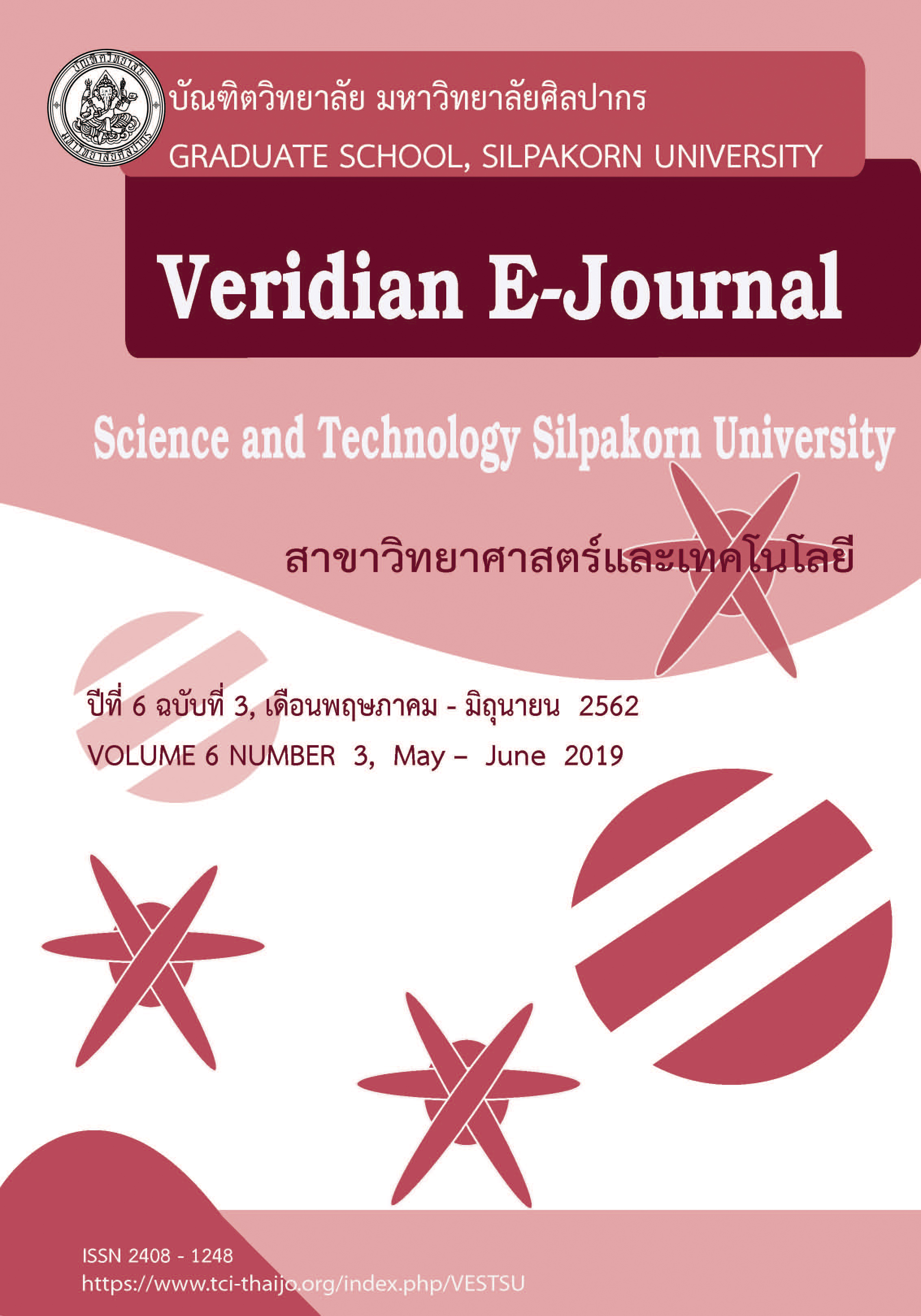การเปรียบเทียบวิธีการประมาณค่าแบบช่วงสำหรับค่าเฉลี่ยประชากรที่มีการแจกแจงปรกติของข้อมูลที่ถูกปัดเศษ (Comparison of Interval Estimation Methods for Normal Population Mean of Rounded Data)
Main Article Content
Abstract
งานวิจัยนี้มีวัตถุประสงค์เพื่อศึกษาและเปรียบเทียบประสิทธิภาพของวิธีการประมาณค่าแบบช่วงสำหรับค่าเฉลี่ยประชากรที่มีการแจกแจงปรกติของข้อมูลที่ถูกปัดเศษทั้งหมด 6 วิธี ได้แก่ ช่วงความเชื่อมั่นด้วยตัวสถิติที (t Interval) ช่วงความเชื่อมั่นด้วยตัวสถิติทีปรับแก้ (Adaptive t Interval) ช่วงความเชื่อมั่นแบบวัลด์ (Wald Interval) ช่วงความเชื่อมั่นแบบวัลด์ปรับแก้ (Adaptive Wald Interval) ช่วงความเชื่อมั่นแบบภาวะน่าจะเป็นโปรไฟล์ (Profile Likelihood Interval) และช่วงความเชื่อมั่นแบบภาวะน่าจะเป็นโปรไฟล์ปรับแก้ (Adaptive Profile Likelihood Interval) ในการศึกษาได้จำลองข้อมูลที่มีการแจกแจงปรกติ ภายใต้ข้อมูล 4 รูปแบบ ได้แก่ ข้อมูลที่ไม่ผ่านการปัดเศษ ข้อมูลที่ถูกปัดเศษเป็นจำนวนเต็ม ข้อมูลที่ถูกปัดเศษเหลือทศนิยม 1 ตำแหน่ง และข้อมูลที่ถูกปัดเศษเหลือทศนิยม 2 ตำแหน่ง ผลการวิจัยพบว่า เมื่อตัวอย่างขนาดเล็ก ช่วงความเชื่อมั่นด้วยตัวสถิติทีและช่วงความเชื่อมั่นแบบภาวะน่าจะเป็นโปรไฟล์ปรับแก้ให้ค่าความน่าจะเป็นคุ้มรวมครอบคลุมเกือบทุกสถานการณ์ และเมื่อขนาดตัวอย่างมีค่าเพิ่มขึ้น ช่วงความเชื่อมั่นด้วยตัวสถิติที ช่วงความเชื่อมั่นแบบวัลด์ช่วงความเชื่อมั่นแบบภาวะน่าจะเป็นโปรไฟล์ และช่วงความเชื่อมั่นแบบภาวะน่าจะเป็นโปรไฟล์ปรับแก้ให้ค่าความน่าจะเป็นคุ้มรวมครอบคลุมทุกสถานการณ์ และความยาวเฉลี่ยของช่วงความเชื่อมั่นด้วยตัวสถิติทีจะให้ช่วงที่สั้นที่สุดเกือบทุกสถานการณ์
The objectives of this research are to study and to compare the efficiency of six interval estimation methods: t interval (t), adaptive t interval (ts), Wald interval (W), adaptive Wald interval (Ws), profile likelihood interval (PL) and adaptive profile likelihood interval (PLs) for normal population mean of rounded data. Data were simulated by normal distribution under 4 types of data: unrounded data, rounded data to integer, rounded data to 1 digit and rounded data to 2 digits. Results show that in case in which sample size is relatively small, the t and adjusted profile likelihood intervals have coverage probabilities larger than the nominal confident level in almost situations. Moreover, when sample size increases, the t, Wald, profile likelihood and adjusted profile likelihood intervals can keep the nominal confident level for all scenarios. Importantly, the t interval gives the shortest length.

